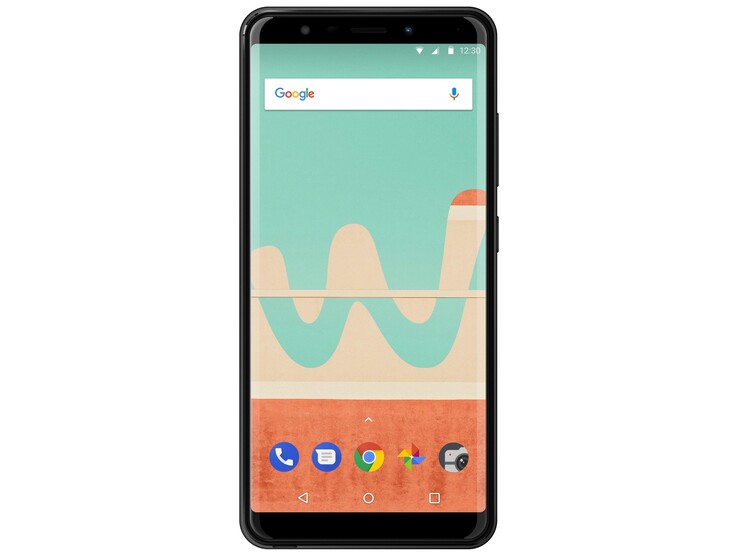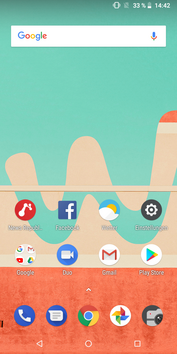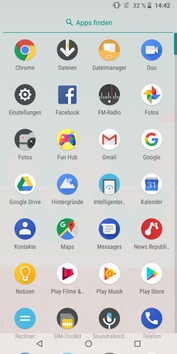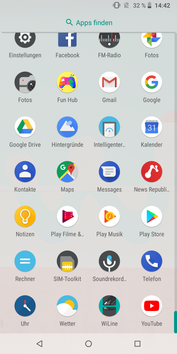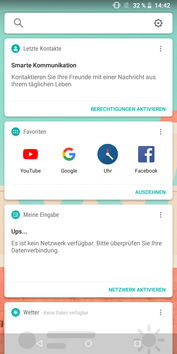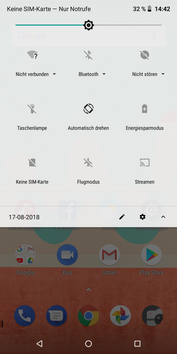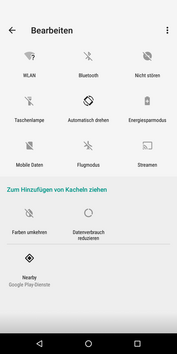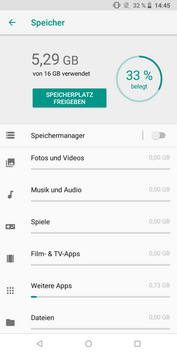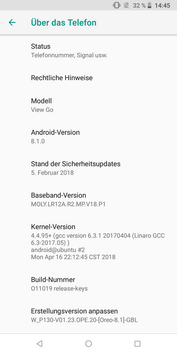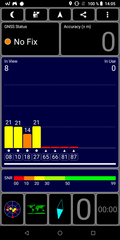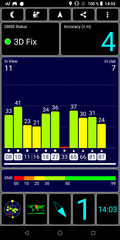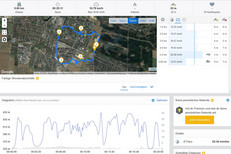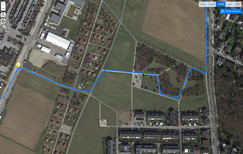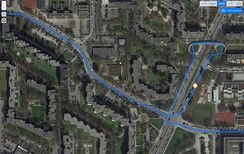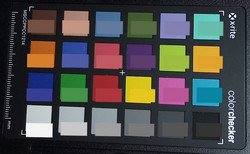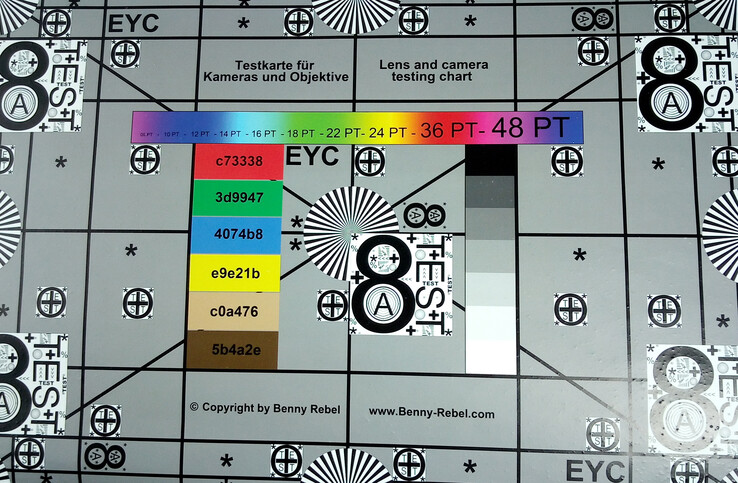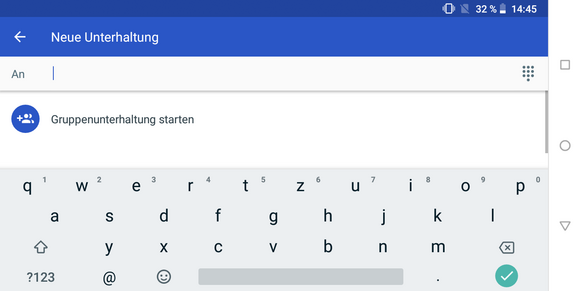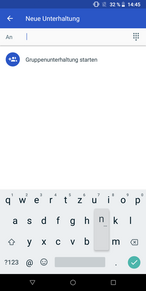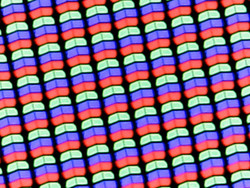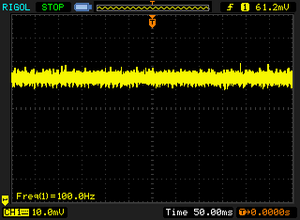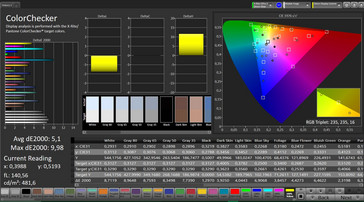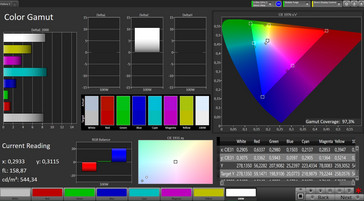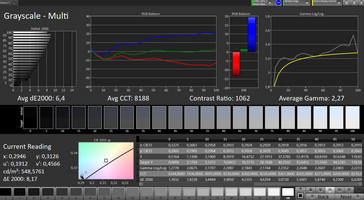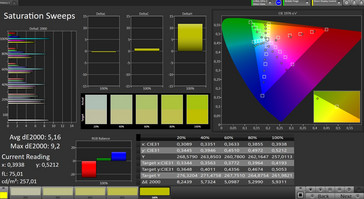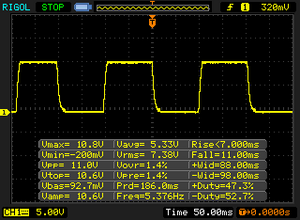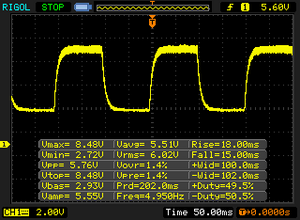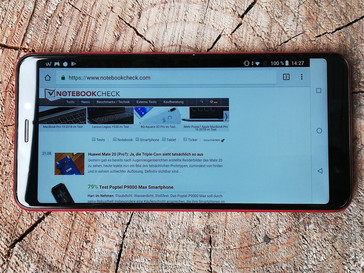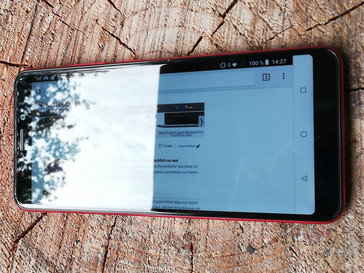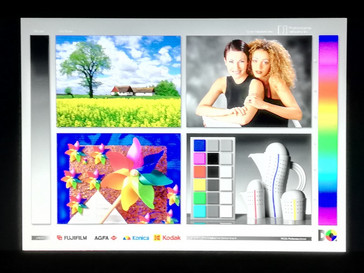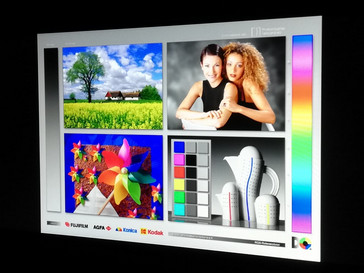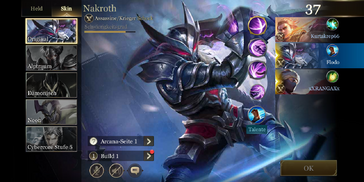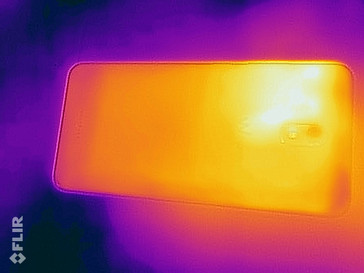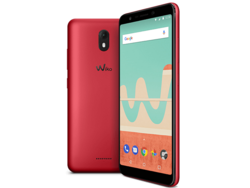Wiko View Go Smartphone Review
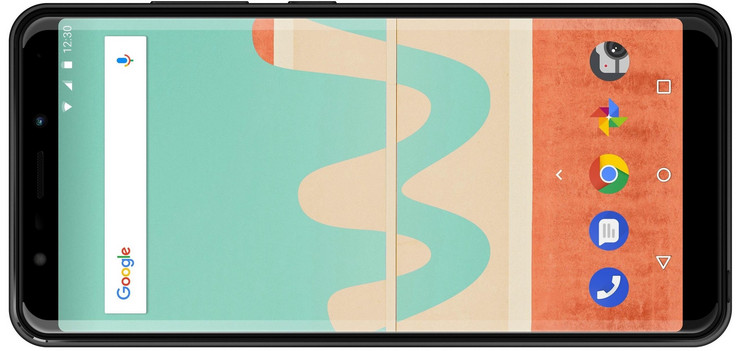
For every additional 10-Euro bill that the customer is willing to pay, Wiko offers the right phone. After the Wiko View Lite and Wiko View Max for 160 and 170 Euros (~$186 and ~$197), respectively, we are now testing the Wiko View Go, which is available on the market for a RRP of 140 Euros (~$163). Users get a smartphone with the entry-level SoC Mediatek MT6739, PowerVR-GE8100 graphics unit, 2 GB of RAM and 16 GB of eMMC flash memory. This makes the Wiko smartphone perfectly suitable for everyday applications and apps with low hardware requirements.
In our review, we compare the Wiko View Go with other low-priced smartphones. These include the LG K9, the Gigaset GS180, the BQ Aquaris U2 Lite and the Xiaomis Redmi Note 5A Prime.
Case - Wiko smartphone with removable back cover
The Wiko View Go has a plastic case and the back cover can be removed. The user can access the removable battery and can easily reach the two MicroSIM card slots and the microSD card slot. The lid sits very firmly and it is almost impossible that it gets loose. The transitions to the main body and the edge to the display are very even. At first glance, it is almost impossible to see that the case can be opened.
The power button and the volume control are on the right side with a slight play. The speaker and the main camera are positioned on the back of the phone. Last but not least, there is a 3.5 mm audio jack on the top and a micro USB connection on the bottom of the device.
Connectivity - Smartphone for entry-level users
The View Go is equipped with a Mediatek MT6739, a PowerVR GE8100 graphics unit, 2GB of RAM and 16GB of eMMC flash memory.
The Wiko smartphone can be charged via a standard 2.0 micro USB port or can be connected to other devices for data transfer. USB OTG functions are not offered, but the View Go allows the simultaneous use of two MicroSIM cards and the addition of a microSD card (up to 128 GB according to the manufacturer).
Software - Android 8.1
Wiko relies on the Android 8.1 operating system with security patches on the level of February 5, 2018. Users of the View Go can expect mostly an Android interface, on which only a few additional apps such as Facebook or Wikos FunHub are pre-installed. These can only be deactivated in the settings, but not uninstalled.
If several people use the Wiko mobile phone, different user accounts can be set up.
Communication and GPS - LTE smartphone
The Wiko View Go can connect to GSM, 3G and LTE networks. The latter is possible with LTE of category 4, allowing download speeds of up to 150 Mbps and upload rates of up to 50 Mbps. In general, reception is steady.
Bluetooth 4.2 and Wi-Fi are available for short-range communication. The latter supports the 802.11 b, g and n standards. In our test however, the Wiko View Go cannot take advantage of the opportunities offered by these slow standards and it remains well behind the competition with data rates below 20 Mbps.
| Networking | |
| iperf3 transmit AX12 | |
| BQ Aquaris U2 lite | |
| Gigaset GS180 | |
| Xiaomi Redmi Note 5A Prime | |
| LG K9 | |
| Wiko View Go | |
| iperf3 receive AX12 | |
| BQ Aquaris U2 lite | |
| Gigaset GS180 | |
| Xiaomi Redmi Note 5A Prime | |
| LG K9 | |
| Wiko View Go | |
With the app "GPS-Test" we test how well the Wiko View Go can determine its own location. Our outdoor location is determined with an accuracy of up to 4 meters (~13 ft). In closed rooms however, no satellite connection is possible. Besides, it takes a long time to even establish a connection.
Normally our test devices are compared to the reference device Garmin Edge 520. However, the View Go refused to record the distance we covered, so that we had to stop this test after several attempts. Even adapted settings for energy saving and the like did not allow tracking with the Wiko phone.
Telephone Functions and Voice Quality - Clear connection with the Wiko smartphone
View Go users can use the standard Android phone app for calls. It is easy to enter phone numbers, select contacts, and track call logs.
Both participants of a call can be clearly understood, but the overall volume could be slightly higher. Speech is transmitted clearly, and ambient noise is filtered to a certain extent. The included stereo headset allows for an even better communication. The available volume is higher, and the sound quality is better.
Cameras – Low-priced smartphone with 13-MP camera
Wiko has equipped the View Go with a 13-MP main camera and a 5-MP selfie camera. With the latter, pictures of sufficient quality can be taken in bright daylight. However, the whole picture gets a bit blurry. Settings of the camera app allow for cosmetic adjustments to make the skin appear softer, or make the eyes larger and the like.
The main camera takes pictures that appear too bright in bright areas and too dark in dark areas. Overall, our panorama test shot shows good details, but there are hardly any differences in dark areas. In addition, the colors look a bit pale. At close range, the image quality depends heavily on uniform lighting. Our test picture shows a clear overexposure and the colors are pale. However, the transition between individual objects in the picture is clearly visible and only details appear a bit blurry. Under low light conditions, the camera of the View Go only provides pictures of low quality and objects in the picture are blurred. In addition, a larger part of the picture is just dark. Professional Mode enables users to play with values such as saturation, brightness, ISO and white balance. The focus can also be adjusted manually.
The video feature has similar limitations to the photographs. Since there is no image stabilizer, slight jerks are transferred 1:1 to the video recording.
With the ColorChecker Passport we test how well the camera of the Wiko View Go can reproduce colors. Different shades are represented very differently. Overall, however, it can be stated that bright colors are too bright and dark colors are rather too dark. Gray and black shades are darker than they should be.
Under controlled light conditions, the Wiko phone can reproduce our test chart, with the overall picture looking a bit pale. Details and fine structures are clearly visible even at the edges, but they are a bit blurry in the corners.
Accessories and Warranty - 24-month warranty on Wiko phones
The Wiko View Go comes with a USB power adaptor and the corresponding micro USB cable, a SIM needle and a stereo headset. There is no accessory that is specifically tailored to the View Go, but it can be purchased from third-party suppliers.
Wiko offers a 24-month warranty for View Go buyers. Please see our Guarantees, Return policies and Warranties FAQ for country-specific information.
Input Devices & Operation - Good touchscreen
Wiko View Go users can use Google GBoard for text inputs. With that, texts can be easily written with the touchscreen. Drag-and-drop movements can be easily performed due to the smooth display surface. Additionally, there is also the position sensor, which adapts the image content to the orientation of the smartphone with a slight delay.
The Wiko View Go does not have a fingerprint sensor.
Display - Reflective, but high-contrast
The Wiko View Go screen consists of a 5.7-inch IPS panel with a resolution of 1.440x720 pixels. The screen offers a relatively good average brightness value of 556 cd/m² and an illumination of 90 percent, which makes it also competitive. Overall, the display of the View Go is mid-table compared to similar devices.
| |||||||||||||||||||||||||
Brightness Distribution: 90 %
Center on Battery: 549 cd/m²
Contrast: 1120:1 (Black: 0.49 cd/m²)
ΔE ColorChecker Calman: 8.58 | ∀{0.5-29.43 Ø4.79}
ΔE Greyscale Calman: 9.3 | ∀{0.09-98 Ø5}
92% sRGB (Calman 2D)
Gamma: 2.083
CCT: 9315 K
| Wiko View Go IPS, 1440x720, 5.7" | Xiaomi Redmi Note 5A Prime IPS, 1280x720, 5.5" | Gigaset GS180 IPS, 1280x720, 5" | LG K9 IPS, 1280x720, 5" | BQ Aquaris U2 lite IPS, 1280x720, 5.2" | |
|---|---|---|---|---|---|
| Screen | 14% | -17% | -6% | 8% | |
| Brightness middle (cd/m²) | 549 | 469 -15% | 478 -13% | 282 -49% | 440 -20% |
| Brightness (cd/m²) | 556 | 464 -17% | 510 -8% | 271 -51% | 434 -22% |
| Brightness Distribution (%) | 90 | 92 2% | 87 -3% | 93 3% | 86 -4% |
| Black Level * (cd/m²) | 0.49 | 0.6 -22% | 0.9 -84% | 0.58 -18% | 0.46 6% |
| Contrast (:1) | 1120 | 782 -30% | 531 -53% | 486 -57% | 957 -15% |
| Colorchecker dE 2000 * | 8.58 | 3.31 61% | 7.6 11% | 5.6 35% | 5.71 33% |
| Colorchecker dE 2000 max. * | 16.5 | 6.68 60% | 13.9 16% | 10.5 36% | 10.6 36% |
| Greyscale dE 2000 * | 9.3 | 2.4 74% | 9.3 -0% | 4.6 51% | 4.7 49% |
| Gamma | 2.083 106% | 2.155 102% | 1.98 111% | 2.29 96% | 1.954 113% |
| CCT | 9315 70% | 6626 98% | 8003 81% | 7333 89% | 7320 89% |
* ... smaller is better
Screen Flickering / PWM (Pulse-Width Modulation)
| Screen flickering / PWM detected | 100 Hz | ≤ 15 % brightness setting | |
The display backlight flickers at 100 Hz (worst case, e.g., utilizing PWM) Flickering detected at a brightness setting of 15 % and below. There should be no flickering or PWM above this brightness setting. The frequency of 100 Hz is very low, so the flickering may cause eyestrain and headaches after extended use. In comparison: 53 % of all tested devices do not use PWM to dim the display. If PWM was detected, an average of 8152 (minimum: 5 - maximum: 343500) Hz was measured. | |||
Our measurements show a good contrast ratio of 1.120:1 and an increased black value of 0.49 cd/m². In addition, the CalMAN analysis shows a slight blue cast and we noticed that the display flickers at a frequency of 100 Hz for a brightness of less than 15 percent. This can cause sensitive eyes to get irritated in the long run.
Display Response Times
| ↔ Response Time Black to White | ||
|---|---|---|
| 18 ms ... rise ↗ and fall ↘ combined | ↗ 7 ms rise | |
| ↘ 11 ms fall | ||
| The screen shows good response rates in our tests, but may be too slow for competitive gamers. In comparison, all tested devices range from 0.1 (minimum) to 240 (maximum) ms. » 39 % of all devices are better. This means that the measured response time is better than the average of all tested devices (20.3 ms). | ||
| ↔ Response Time 50% Grey to 80% Grey | ||
| 33 ms ... rise ↗ and fall ↘ combined | ↗ 18 ms rise | |
| ↘ 15 ms fall | ||
| The screen shows slow response rates in our tests and will be unsatisfactory for gamers. In comparison, all tested devices range from 0.165 (minimum) to 636 (maximum) ms. » 43 % of all devices are better. This means that the measured response time is similar to the average of all tested devices (31.7 ms). | ||
Outdoor use of the Wiko View Go is only possible to a limited extent, despite the good brightness value. Objects are heavily reflected in the display, even on shady days. Looking straight at the screen can compensate for most of the disturbances, but outdoor use is not recommended in the long run.
Viewing angles of the Wiko View Go IPS panel are very stable. Image contents can be clearly seen from almost every angle without color distortion. As long as there are no reflections obstructing your view of the display, you can use the Wiko smartphone from any position imaginable.
Performance – Smartphone for simple tasks
Wiko View Go is equipped with a Mediatek MT6739-SoC, a PowerVR-GE8100 graphics unit, 2GB of RAM and 16GB of eMMC flash memory for use of the Android 8.1 system. With these features, the Wiko smartphone is one of the entry-level devices and is ideal for simple everyday tasks.
In our benchmark tests, the Wiko smartphone ranks at the lower end compared to other devices. In comparison with similarly low-cost devices such as the LG K9 and the Gigasets GS180, performance seems appropriate for a device of this price category. Test results of the Xiaomi Redmi Note 5A Prime, on the other hand, show what kind of performance can be expected from a device that costs 200 Euros (~$232).
| AnTuTu v6 - Total Score (sort by value) | |
| Wiko View Go | |
| Xiaomi Redmi Note 5A Prime | |
| Gigaset GS180 | |
| LG K9 | |
| BQ Aquaris U2 lite | |
| Average Mediatek MT6739 (25012 - 38060, n=13) | |
| AnTuTu v7 - Total Score (sort by value) | |
| Wiko View Go | |
| Xiaomi Redmi Note 5A Prime | |
| Gigaset GS180 | |
| LG K9 | |
| BQ Aquaris U2 lite | |
| Average Mediatek MT6739 (26874 - 46951, n=13) | |
| PCMark for Android | |
| Work performance score (sort by value) | |
| Wiko View Go | |
| Xiaomi Redmi Note 5A Prime | |
| Gigaset GS180 | |
| LG K9 | |
| BQ Aquaris U2 lite | |
| Average Mediatek MT6739 (3742 - 5136, n=11) | |
| Work 2.0 performance score (sort by value) | |
| Wiko View Go | |
| Xiaomi Redmi Note 5A Prime | |
| Gigaset GS180 | |
| LG K9 | |
| BQ Aquaris U2 lite | |
| Average Mediatek MT6739 (2467 - 5377, n=16) | |
| GFXBench 3.0 | |
| on screen Manhattan Onscreen OGL (sort by value) | |
| Wiko View Go | |
| Xiaomi Redmi Note 5A Prime | |
| Gigaset GS180 | |
| LG K9 | |
| BQ Aquaris U2 lite | |
| Average Mediatek MT6739 (4.4 - 10, n=16) | |
| Average of class Smartphone (18 - 166, n=159, last 2 years) | |
| 1920x1080 1080p Manhattan Offscreen (sort by value) | |
| Wiko View Go | |
| Xiaomi Redmi Note 5A Prime | |
| Gigaset GS180 | |
| LG K9 | |
| BQ Aquaris U2 lite | |
| Average Mediatek MT6739 (2.2 - 2.8, n=14) | |
| Average of class Smartphone (12 - 606, n=158, last 2 years) | |
| GFXBench 3.1 | |
| on screen Manhattan ES 3.1 Onscreen (sort by value) | |
| Wiko View Go | |
| Xiaomi Redmi Note 5A Prime | |
| Gigaset GS180 | |
| LG K9 | |
| Average Mediatek MT6739 (2.6 - 6.7, n=16) | |
| Average of class Smartphone (11 - 166, n=159, last 2 years) | |
| 1920x1080 Manhattan ES 3.1 Offscreen (sort by value) | |
| Wiko View Go | |
| Xiaomi Redmi Note 5A Prime | |
| Gigaset GS180 | |
| LG K9 | |
| Average Mediatek MT6739 (1.3 - 1.7, n=16) | |
| Average of class Smartphone (8.4 - 413, n=158, last 2 years) | |
| GFXBench | |
| on screen Car Chase Onscreen (sort by value) | |
| Wiko View Go | |
| Xiaomi Redmi Note 5A Prime | |
| LG K9 | |
| Average Mediatek MT6739 (1.1 - 2.6, n=15) | |
| Average of class Smartphone (5.5 - 154, n=160, last 2 years) | |
| 1920x1080 Car Chase Offscreen (sort by value) | |
| Wiko View Go | |
| Xiaomi Redmi Note 5A Prime | |
| LG K9 | |
| Average Mediatek MT6739 (0.6 - 0.91, n=14) | |
| Average of class Smartphone (3.5 - 216, n=159, last 2 years) | |
The View Go is mid-table in the browser benchmarks, achieving values that are at a reasonable level for a device of this price category. Browsing with the Wiko smartphone turns out to be fast, but occasionally it takes a little longer to load media contents.
| JetStream 1.1 - Total Score | |
| BQ Aquaris U2 lite (Chrome 67) | |
| Xiaomi Redmi Note 5A Prime (Chrome 67) | |
| Average Mediatek MT6739 (13.4 - 18.5, n=14) | |
| Wiko View Go (Chrome 67) | |
| Gigaset GS180 (Chrome 67) | |
| LG K9 (Chrome 67) | |
| Octane V2 - Total Score | |
| Average of class Smartphone (2228 - 121337, n=202, last 2 years) | |
| Xiaomi Redmi Note 5A Prime (Chrome 67) | |
| BQ Aquaris U2 lite (Chrome 67) | |
| Average Mediatek MT6739 (2093 - 3386, n=15) | |
| Wiko View Go (Chrome 67) | |
| Gigaset GS180 (Chrome 67) | |
| LG K9 (Chrome 67) | |
| Mozilla Kraken 1.1 - Total | |
| Gigaset GS180 (Chrome 67) | |
| LG K9 (Chrome 67) | |
| Wiko View Go (Chrome 67) | |
| Average Mediatek MT6739 (13599 - 18154, n=16) | |
| Xiaomi Redmi Note 5A Prime (Chrome 67) | |
| BQ Aquaris U2 lite (Chrome 67) | |
| Average of class Smartphone (257 - 28190, n=157, last 2 years) | |
* ... smaller is better
Users of the Wiko View Go have access to a 16 GB eMMC flash memory, out of which slightly more than 10 GB is free to be used. Compared to other benchmark devices, the View Go memory can compete with most comparable devices and places the Wiko smartphone in the middle of our ranking.
Memory can be expanded by up to 128 GB via the internal microSD card reader. The card reader achieves good values with our Toshiba Exceria Pro M501 memory card, and can also compete with more expensive smartphones.
| Wiko View Go | Xiaomi Redmi Note 5A Prime | Gigaset GS180 | LG K9 | BQ Aquaris U2 lite | Average 16 GB eMMC Flash | Average of class Smartphone | |
|---|---|---|---|---|---|---|---|
| AndroBench 3-5 | 34% | -27% | -21% | 6% | -32% | 1784% | |
| Sequential Read 256KB (MB/s) | 235.4 | 287.1 22% | 154.1 -35% | 131.9 -44% | 251.7 7% | 164.5 ? -30% | 2202 ? 835% |
| Sequential Write 256KB (MB/s) | 60.7 | 120.3 98% | 67.3 11% | 75.2 24% | 75.9 25% | 43 ? -29% | 1819 ? 2897% |
| Random Read 4KB (MB/s) | 36.05 | 47.87 33% | 12.5 -65% | 11.38 -68% | 44.3 23% | 21.7 ? -40% | 292 ? 710% |
| Random Write 4KB (MB/s) | 11.95 | 17.15 44% | 9.73 -19% | 7.47 -37% | 7.9 -34% | 8.08 ? -32% | 334 ? 2695% |
| Sequential Read 256KB SDCard (MB/s) | 79.4 ? | 84.4 ? 6% | 79.3 ? 0% | 84 ? 6% | 59.1 ? -26% | ||
| Sequential Write 256KB SDCard (MB/s) | 60.2 ? | 60.2 ? 0% | 59.4 ? -1% | 63.9 ? 6% | 39.8 ? -34% |
Games - Wiko smartphone for casual games
The PowerVR-GE8100 graphics unit which is built into the Wiko View Go is only suitable for simple games with low 3D performance requirements. For more sophisticated games you have to expect long loading times or you have to make do with low graphics settings. For example, we were able to start the game “Arena of Valor”, but it crashed already in the party selection. The slightly older “Dead Trigger 2”, on the other hand, ran smoothly.
Hardware requirements also affect control of the games. The response of the position sensor is slightly delayed, which also needs to be taken into account when playing games where this is used.
Emissions - Decent speaker in Wiko View Go
Temperature
Surface temperatures of the Wiko View Go are around 38 °C (~100 °F) during idle and can rise to 44 °C (~111 °F) under load. The phone feels very warm, but can be easily held in your hand at any time. We therefore do not expect any limitations in the Wiko View Go due to high temperatures.
(±) The maximum temperature on the upper side is 44.2 °C / 112 F, compared to the average of 35.2 °C / 95 F, ranging from 21.9 to 247 °C for the class Smartphone.
(±) The bottom heats up to a maximum of 44.7 °C / 112 F, compared to the average of 34 °C / 93 F
(±) In idle usage, the average temperature for the upper side is 34.7 °C / 94 F, compared to the device average of 32.9 °C / 91 F.
Speaker
The Wiko View Go speaker has a moderate volume, but it is loud enough to cover up the surrounding noises. The mids in particular are pronounced, and everything above slightly drops off. Lows are not available. The speaker can be used for occasional playback, but the included stereo headset offers a better alternative. The sound is much more balanced and the volume is higher.
Plugs engage firmly in the 3.5mm audio jack, which does not have a negative effect on audio transmission.
Wiko View Go audio analysis
(±) | speaker loudness is average but good (75.7 dB)
Bass 100 - 315 Hz
(-) | nearly no bass - on average 27.1% lower than median
(±) | linearity of bass is average (9.7% delta to prev. frequency)
Mids 400 - 2000 Hz
(±) | higher mids - on average 8.5% higher than median
(±) | linearity of mids is average (9.2% delta to prev. frequency)
Highs 2 - 16 kHz
(+) | balanced highs - only 3.3% away from median
(+) | highs are linear (3.7% delta to prev. frequency)
Overall 100 - 16.000 Hz
(-) | overall sound is not linear (30.4% difference to median)
Compared to same class
» 78% of all tested devices in this class were better, 4% similar, 18% worse
» The best had a delta of 11%, average was 35%, worst was 134%
Compared to all devices tested
» 88% of all tested devices were better, 3% similar, 9% worse
» The best had a delta of 4%, average was 24%, worst was 134%
LG K9 audio analysis
(+) | speakers can play relatively loud (86 dB)
Bass 100 - 315 Hz
(-) | nearly no bass - on average 45.3% lower than median
(+) | bass is linear (5.5% delta to prev. frequency)
Mids 400 - 2000 Hz
(±) | reduced mids - on average 13.2% lower than median
(±) | linearity of mids is average (13% delta to prev. frequency)
Highs 2 - 16 kHz
(±) | higher highs - on average 6.7% higher than median
(+) | highs are linear (3.1% delta to prev. frequency)
Overall 100 - 16.000 Hz
(-) | overall sound is not linear (35.9% difference to median)
Compared to same class
» 85% of all tested devices in this class were better, 1% similar, 14% worse
» The best had a delta of 11%, average was 35%, worst was 134%
Compared to all devices tested
» 94% of all tested devices were better, 1% similar, 6% worse
» The best had a delta of 4%, average was 24%, worst was 134%
Power Management - Smartphone with long battery life
Power Consumption
The Wiko View Go is a relatively low-energy consuming smartphone, which slightly stands out compared to other devices in the same price range. Although other phones have a power consumption of below 1.2 watts in idle, they are well above the 3.5 watts that we measured under load.
The included charger output is rated at 7.75 watts and is thus sufficient to charge the Wiko View Go.
| Off / Standby | |
| Idle | |
| Load |
|
Key:
min: | |
| Wiko View Go 3000 mAh | Xiaomi Redmi Note 5A Prime 3080 mAh | Gigaset GS180 3000 mAh | LG K9 2500 mAh | BQ Aquaris U2 lite 3100 mAh | Average Mediatek MT6739 | Average of class Smartphone | |
|---|---|---|---|---|---|---|---|
| Power Consumption | -48% | -12% | -22% | 2% | -44% | -59% | |
| Idle Minimum * (Watt) | 1.4 | 1.8 -29% | 0.75 46% | 0.54 61% | 1.2 14% | 1.522 ? -9% | 0.851 ? 39% |
| Idle Average * (Watt) | 1.7 | 2.4 -41% | 1.88 -11% | 2.09 -23% | 1.5 12% | 2.17 ? -28% | 1.431 ? 16% |
| Idle Maximum * (Watt) | 2 | 2.9 -45% | 1.92 4% | 2.2 -10% | 1.7 15% | 2.86 ? -43% | 1.61 ? 19% |
| Load Average * (Watt) | 2.8 | 4 -43% | 4.35 -55% | 4.93 -76% | 3 -7% | 4.73 ? -69% | 7.08 ? -153% |
| Load Maximum * (Watt) | 3.5 | 6.3 -80% | 5.02 -43% | 5.68 -62% | 4.3 -23% | 5.99 ? -71% | 11.1 ? -217% |
* ... smaller is better
Battery Life
In our Wi-Fi test, the Wiko View Go achieves a very good runtime of over 16 hours. Thus, the Wiko smartphone can leave the competition clearly behind.
The runtime can also be increased through an exchangeable battery. Alternatively, the View Go is fully charged with the included charger after about two hours.
| Wiko View Go 3000 mAh | Xiaomi Redmi Note 5A Prime 3080 mAh | Gigaset GS180 3000 mAh | LG K9 2500 mAh | BQ Aquaris U2 lite 3100 mAh | |
|---|---|---|---|---|---|
| Battery runtime | |||||
| WiFi v1.3 (h) | 16.4 | 10.8 -34% | 8.3 -49% | 5.9 -64% | 10.7 -35% |
Pros
Cons
Verdict – low-priced Wiko smartphone without GPS
In our review, the Wiko View Go turns out to be a simple smartphone for users with low hardware requirements. Everyday apps work without problems, and since you can expand the memory with an SD card, there is also enough memory for your own data. The replaceable battery and Dual SIM functionality are additional assets.
The Wiko View Go is an affordable smartphone for everyday use and offers a removable battery, but is not recommended to be used for GPS applications.
A major flaw however, is the error-prone GPS. Since we were not able to record the traveled distance in our test, it is also unlikely that a navigation software and the like works reliably on the View Go. However, for users who can do without it, the Wiko smartphone is worth considering. The low price can also help in the decision-making process.
Wiko View Go
- 08/22/2018 v6 (old)
Mike Wobker




